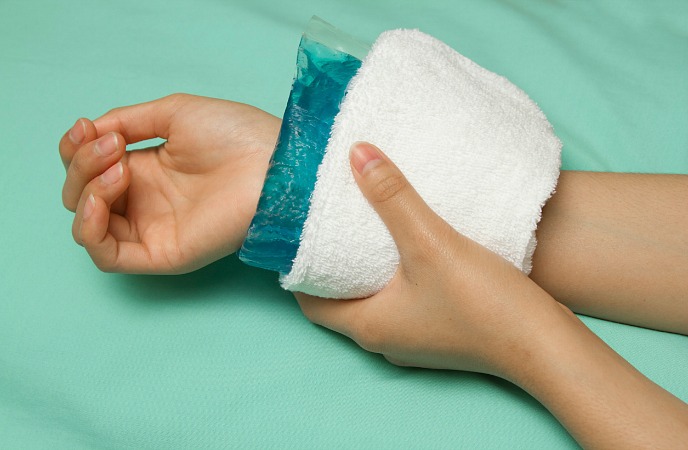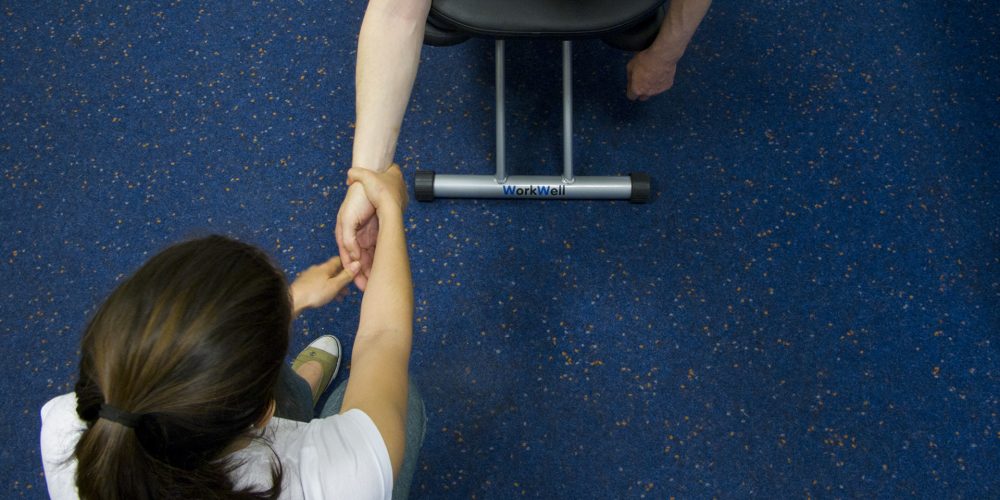Anyway we put it, we are not really made to spend 6-8 hrs/day in front of a monitor so the body naturally reacts. And the level of reaction depends on the intensity of certain repetitive movements. One of them is ‘the mouse’. Practically a really good friend alongside its closest relative, the keyboard…Both play a crucial role in causing from discomfort to serious issues. Since it is difficult to be pro active to that, due to the demands of modern work tools, we can be reactive. Supportive in a way, with massage!
In this article, we’ll cover what Carpal Tunnel Syndrome is, it’s causes and symptoms, and ways to relieve and avoid the pain of this condition.
Causes and Symptoms of Carpal Tunnel Syndrome
Carpal Tunnel Syndrome is caused by inflammation or entrapment of the median nerves within the carpal tunnel of the inside of the wrist. The symptoms can include pain, numbness and tingling in the hand, thumb, wrist and forearm. It may also include difficulty grasping or carrying objects.
Carpal Tunnel Syndrome is often associated with long-term repetitive motions or strain, such as working at a computer or assembly line for hours at a stretch. However, genetics such as hereditary small carpal tunnels and diseases such as diabetes and rheumatoid arthritis may also contribute to the symptoms.
Carpal Tunnel Syndrome Massage
Massage therapy for carpal tunnel is the most non-invasive, cost-efficient and effective long term treatment for Carpal Tunnel Syndrome.
Massage therapy addresses the inflammation, pain and numbness by softening and lengthening the muscles and fascia of the neck, shoulder, upper arm, elbow, forearm, wrist and hand. During a massage to treat Carpal Tunnel Syndrome, the therapist will use comprehensive deep tissue work that will help to release adhesions, trigger points, and tension in the soft tissue of the shoulder, arm, wrist, and hand.
Carpal Tunnel Relief and Prevention
Our body posture and repetitive behaviors are usually the cause of both Carpal Tunnel Syndrome and Thoracic Outlet Syndrome. Modifications in your daily routines can help prevent future issues. Be sure to consult your medical doctor before starting any type of exercise or therapy program. Here are some tips to get started:
- Avoid keeping your wrists in the same position for more than 30 minutes at a time.
- Move your entire body as much and as often as you can at work.
- Stretch your pectoral muscles several times a day by grasping your wrists behind your back and holding for 30-60 seconds.
- Do deep shoulder circles by bringing your shoulders to your ears and back down in circular motions.
- Don’t let one hand overcompensate for the other, use them evenly.
- Maintain the correct posture while sitting at your desk.
- Keep your forearms level with the keyboard while typing.
- Avoid bending your wrists or performing repetitive motions for long periods of time.
- Getting regular monthly massages can help to treat neck and shoulder pain and will reduce the strain you put on your wrists at work.
- Massage your own arms, wrists, hands and fingers to improve your circulation.
Research
- In a study on massage and carpal tunnel, participants in a massage therapy group improved on median peak latency and grip strength. They also experienced lower levels of perceived pain, anxiety, and depressed mood. The results suggest that symptoms of CTS might be relieved by a daily regimen of massage therapy. (Field, T., Diego, M., Cullen, C., Hartshorn, K., Gruskin, A., Hernandez-Reif, M., & Sunshine, W. Carpal tunnel syndrome symptoms are lessened following massage therapy. Journal of Bodywork and Movement Therapies, Volume 8, Issue 1, January 2004, Pages 9-14.) Abstract
- Carpal Tunnel Syndrome symptoms can be decreased through regular massage. Research Brief
- Twenty-two CTS patients were treated Massage Therapy consisting of 6 treatments twice per week of soft tissues of wrist and hands and of carpal bones. Pts were assessed for hand sensitivity, paresthesia, hand strength, hand and forearm pain, night awakening; Massage Therapy improved Carpal Tunnel Syndrome signs and symptoms, with benefits maintained at follow-up. Abstract
WorkWell Tip: Also try placing ice ideally at night and in the morning, for 10′-15′ – very soothing! For 10 days and then asses how often you need it in the future.



